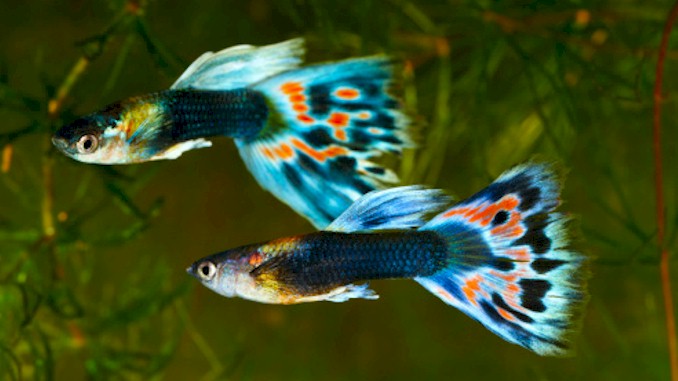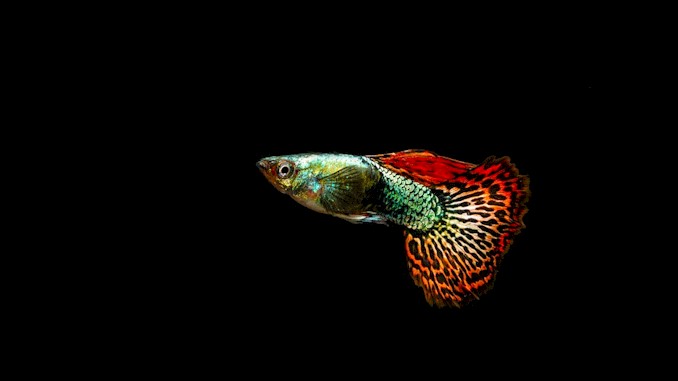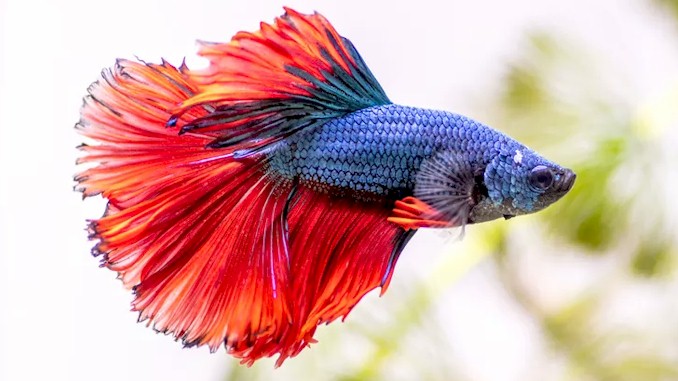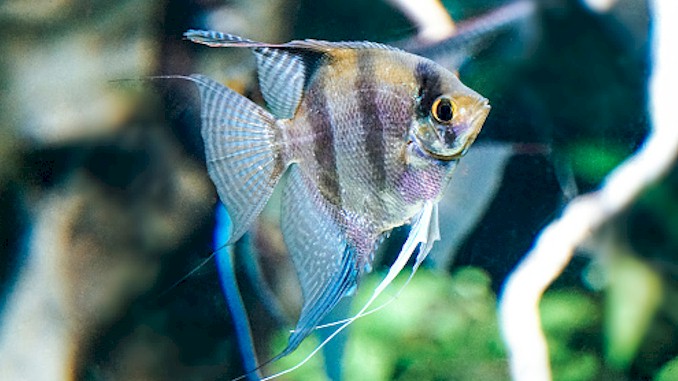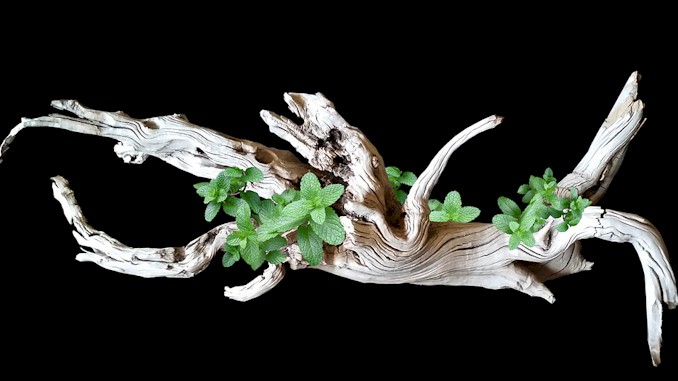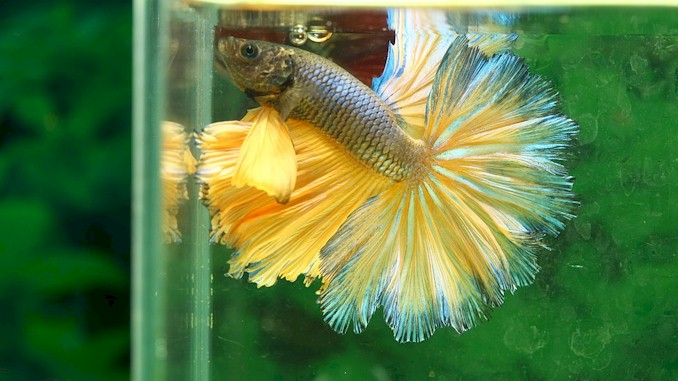The Science of Guppy Coloration: A Complete Breakdown
If you are a guppy enthusiast, you might be wondering when do guppies get their color and how can you enhance their beauty. Guppies are one of the most popular and colorful freshwater fish in the aquarium hobby, but they are not born with their vibrant hues. In fact, guppy fry (baby guppies) are almost transparent and develop their color gradually as they grow. In this blog post, I will explain the stages of guppy color development, the factors that influence their coloration, and how you can provide optimal conditions for your guppies to show off their best colors. Read on to find out everything you need to know about guppy coloration!
Guppies get their color through a process of gradual development that starts from birth and continues until adulthood. The color development of guppies is influenced by genetic and environmental factors, such as temperature, diet, and light. The coloration of guppies varies widely among individuals and populations, but generally males are more colorful than females. Guppies can display a range of colors, such as red, blue, green, yellow, orange, black, and iridescent.
Now that you know when and how guppies get their color, you might be curious to learn more about this fascinating topic. In the following sections, I will go into more detail about the different stages of guppy color development, the best ways to enhance your guppies’ color naturally, and some tips on how to breed guppies for specific color traits. If you want to make your guppy tank more colorful and attractive, don’t miss this complete guide on guppy coloration!
The Behind Guppy Coloration: The Genetic, Hormonal and Environment
Guppy coloration is influenced by a variety of factors, some of which are genetic, hormonal while others are environmental. Understanding these factors is crucial for guppy owners who want to optimize the coloration of their fish and create a visually stunning aquarium.
Genetics plays a significant role in guppy coloration, as different strains and breeds of guppies have distinct color patterns and combinations.
Guppies have four major types of color cells: xanthophores (yellow-red), erythrophores (red), iridophores (reflective), and melanophores (black). These color cells are derived from neural crest cells during embryonic development and migrate to different locations in the body. The distribution, density, size, shape, and arrangement of these color cells create the diverse patterns and hues that we see in guppies.
The genes that control guppy coloration are mostly located on the sex chromosomes (X and Y) and affect mainly males. Females have two X chromosomes, while males have one X and one Y chromosome. The Y chromosome carries genes that suppress or enhance the expression of color genes on the X chromosome. Therefore, males can inherit different combinations of color genes from their mothers depending on which X chromosome they receive. Some examples of sex-linked color genes are red tail (Rt), yellow tail (Yt), green tail (Gt), blue tail (Bt), snakeskin (Ssb), tuxedo (Tu), glass belly (Gb), etc.
There are also some autosomal color genes that are located on non-sex chromosomes and affect both males and females. These genes usually modify or regulate the expression of sex-linked color genes by affecting the development or function of color cells. Some examples of autosomal color genes are blue (Bl), golden (Go), albino (a), blond (b), metallic (Mt), etc.
In addition to genetics, hormones also play a role in guppy coloration by influencing the activity and responsiveness of color cells. The most important hormones for guppy coloration are thyroid hormones, melanin-concentrating hormone, and melanocyte-stimulating hormone. Thyroid hormones regulate the differentiation and migration of neural crest cells into color cells during embryonic development. Melanin-concentrating hormone reduces the dispersion of pigment granules within melanophores, making them appear lighter in color. The melanocyte-stimulating hormone increases the dispersion of pigment granules within melanophores, making them appear darker in color.
Hormones can also be affected by environmental factors, such as temperature, light, stress, or social interactions. For example, guppies may change their color intensity or contrast depending on their mood, sexual readiness, or dominance status. These changes are usually temporary and reversible, but they can also have long-term effects on guppy coloration if they persist for a long time.
Besides genetics and hormones, guppy coloration is also influenced by various environmental factors that can enhance or diminish the expression of color genes and affect the activity of color cells. Some of these factors are:
Water conditions:
Providing your guppies with lots of fresh, clean water is essential for their health and coloration1. Poor water quality can stress your guppies and make them lose their colors or become more susceptible to diseases. The pH, hardness, and temperature of the water can also affect how your guppies display their colors. For example, soft water with a low pH can make blue colors more intense, while hard water with a high pH can make red colors more vivid.
Quality of food:
The bright color in guppies comes from pigments in their skin, known as carotenoids. These pigments are not synthesized by guppies themselves but obtained from their diet. Therefore, feeding your guppies a varied and nutritious diet that contains carotenoid-rich foods such as algae, spirulina, shrimp, krill, etc., can enhance the expression of orange and red pigments in guppies. Conversely, feeding your guppies a poor or monotonous diet that lacks carotenoids can make them lose their colors or become duller.
Type of light:
The type and intensity of light that you use in your aquarium can also affect how your guppies show their colors. Natural sunlight is the best source of light for guppy coloration, as it provides a full spectrum of wavelengths that can reflect off the iridophores and enhance the carotenoids in the skin. However, if you don’t have access to natural sunlight, you can use artificial lights that mimic natural daylight, such as LED lights or fluorescent tubes. Avoid using lights that are too dim, too bright, or have a single wavelength, such as blue or red lights, as they can distort or wash out the natural colors of your guppies.
These are some of the main environmental factors that affect guppy coloration. By adjusting these factors according to your preferences and needs, you can create optimal conditions for your guppies to display their beautiful colors. In the next section, I will give you some tips on how to breed guppies for specific colors and patterns.
As you can see, guppy coloration is a complex trait that involves multiple genetic and hormonal factors that interact with each other and with the environment. Understanding how these factors work can help you appreciate the beauty and diversity of guppy colors more deeply.
The Role of Male and Female Guppies in Color Development: Differences and Similarities
Male and female guppies have different coloration patterns, which are influenced by various factors, including genetics, hormones, and environmental cues. Understanding these differences is crucial for guppy owners who want to identify the sex of their fish accurately and appreciate the beauty of their coloration fully. In this section, we will explore the role of male and female guppies in color development, including their similarities and differences.
Male guppies are typically more brightly colored than females, with vibrant hues of blue, green, orange, and red. This coloration is a result of the interplay between genetic factors and hormone levels, specifically androgens such as testosterone. Male guppies produce high levels of androgens, which stimulate the development of bright colors and patterns on the body, fins, and tail. Additionally, male guppies have a specialized structure called a gonopodium, which is used for mating and is often more brightly colored than the rest of their body.
Female guppies, on the other hand, have a more subdued coloration pattern, with less bright colors and smaller spots or patterns. However, female guppies are not entirely dull and can still exhibit beautiful coloration, including metallic hues and iridescence. Female guppies’ coloration is influenced by genetic factors and hormone levels, particularly estrogens, which play a role in the development of the reproductive system and secondary sexual characteristics. Furthermore, female guppies can change their coloration depending on their reproductive state, with pregnant females exhibiting darker coloration and stripes on their body.
Despite these differences, male and female guppies share some similarities in their coloration patterns. Both sexes can exhibit coloration changes depending on environmental cues, such as lighting, water quality, and temperature. Additionally, both males and females can display coloration patterns that are characteristic of their strain or breed, such as the green cobra or the red tuxedo guppy. Therefore, it’s crucial to understand the unique coloration patterns of each sex while also appreciating their similarities.
In conclusion, male and female guppies have different coloration patterns, which are influenced by various factors, including genetics, hormones, and environmental cues. By understanding these differences and similarities, guppy owners can appreciate the beauty of their fish fully and identify the sex of their fish accurately. In the following sections, we will delve deeper into the role of genetics, hormones, and other factors in guppy coloration and provide you with practical tips and strategies for enhancing the coloration of your fish.
The Color Development Timeline of Guppy Fry
One of the fascinating aspects of guppy keeping is watching their fry grow and develop their color. Guppy fry are born without any coloration and gradually acquire their adult hues as they mature. The color development of guppy fry depends on several factors, such as genetics, hormones, diet, and environment. However, there is a general timeline that most guppy fry follow when it comes to color development. Here is a breakdown of the different stages of guppy fry color development and what to expect at each stage.
Stage 1: Birth to Day 7
Guppy fry are born live after a gestation period of about 28 days. At birth, they are almost transparent and have no visible coloration. They measure about 6 mm in length and have a yolk sac attached to their belly that provides them with nutrition for the first few days. During this stage, guppy fry are very vulnerable to predators and need hiding places in the tank.
Stage 2: Day 8 to Day 10
By the end of the first week, guppy fry start to produce pigment in their bodies and show signs of color development. The first color that appears is usually yellow, which gives them a slight tint on their body. Some guppy fry may also develop patches of red or specks of blue at this stage. The color development at this stage is still very subtle and may not be noticeable unless you look closely.
Stage 3: Day 11 to Day 20
During this stage, guppy fry continue to grow and develop more colors on their body. They may also start to show some iridescence or shimmer on their scales. The colors that appear at this stage depend largely on the genetics of the parents and may vary widely among individuals. Some common colors that may appear at this stage are green, orange, black, purple, pink, or silver.
Stage 4: Day 21 to Day 30
By the end of the first month, guppy fry have reached about half of their adult size and have developed most of their body colors. They also start to show some patterns on their fins and body, such as spots, stripes, or patches. The patterns that appear at this stage are also influenced by genetics and may be inherited from either parent or a combination of both. Some common patterns that may appear at this stage are snakeskin, leopard spots, tuxedo stripes or mosaic patches.
Stage 5: Day 31 onwards
After one month old, guppy fry are considered juveniles and have achieved most of their adult coloration and patterning. They can be easily distinguished by sex, as males have more vibrant colors and longer fins than females. Males also develop a modified anal fin called a gonopodium, which they use for mating with females. Females have a darker spot near their anal fin called a gravid spot, which indicates pregnancy when enlarged. At this stage, guppies can reproduce themselves and pass on their color traits to their offspring.
As you can see, guppies get their color through a gradual process that takes several weeks or months, depending on various factors. The final result is a stunning display of colors and patterns that make guppies one of the most attractive freshwater fish in the hobby.
Timeline of Guppy Coloration: From Fry to Adult
Guppy coloration undergoes significant changes throughout their life cycle, from the time they hatch as fry to when they reach adulthood. Understanding this timeline is crucial for guppy owners who want to monitor their fish’s growth and development and ensure they maintain optimal health and coloration. In this section, we will explore the timeline of guppy coloration, including the stages of development and the factors that influence coloration at each stage.
Stage 1: Fry
When guppy fry first hatch, they have a transparent body and do not exhibit any coloration. However, as they grow and develop, they start to show faint hints of color, usually in the form of pigmented spots or stripes on their body. The exact timing of this coloration can vary, depending on genetic factors and environmental cues, such as lighting and temperature. Some fry may start to show coloration within a few days of hatching, while others may take several weeks.
Stage 2: Juvenile
As guppy fry continue to grow and mature, they enter the juvenile stage, where they exhibit more pronounced coloration patterns. At this stage, guppies can display a wide range of colors and patterns, depending on their genetics and environmental conditions. For example, some guppies may develop metallic hues or iridescence, while others may show spots or stripes of various colors. The coloration patterns of juvenile guppies can change rapidly, depending on their growth rate and environmental factors such as water quality and nutrition.
Stage 3: Sub-Adult
Once guppies reach the sub-adult stage, their coloration patterns become more stable, and their body shape and fin size start to resemble that of adult guppies. At this stage, guppies can exhibit a wider range of colors and patterns, including bright hues of red, orange, blue, and green. The exact timing of this coloration development can vary depending on genetics, nutrition, and environmental cues.
Stage 4: Adult
Finally, adult guppies exhibit the most stable and pronounced coloration patterns, with fully developed body shapes and fin sizes. At this stage, guppies can exhibit a wide range of colors and patterns, including metallic hues, iridescence, spots, and stripes. The exact coloration pattern of adult guppies can vary depending on their strain or breed, as well as environmental factors such as lighting and water quality.
In conclusion, the timeline of guppy coloration is a complex process that is influenced by genetic factors, nutrition, and environmental cues. By understanding the stages of development and the factors that influence coloration at each stage, guppy owners can monitor their fish’s growth and development and ensure they maintain optimal health and coloration. In the following sections, we will provide you with practical tips and strategies for enhancing the coloration of your guppies at each stage of development.
How to Enhance Guppy Coloration: Tips and Tricks for Aquarium Owners
Guppies are popular among aquarium owners because of their colorful and vibrant appearance. However, even the most colorful guppies can lose their luster over time. As an aquarium owner, it is essential to know how to enhance guppy coloration and keep your fish looking their best. Here are some tips and tricks to help you:
- Maintain water quality: One of the most important factors in enhancing guppy coloration is to maintain a clean and healthy environment in the aquarium. Poor water quality can cause stress in fish, leading to loss of color and other health problems. To keep the water quality at its best, perform regular water changes and use a quality filtration system.
- Provide a balanced diet: Another critical factor in enhancing guppy coloration is to provide a balanced diet. Guppies need a variety of nutrients to maintain their coloration, and a lack of specific nutrients can cause their colors to fade. Choose a high-quality fish food that includes essential vitamins, minerals, and protein. You can also add some fresh or frozen foods to their diet, such as brine shrimp or bloodworms, to provide additional nutrients.
- Use lighting: Proper lighting can help enhance guppy coloration, especially in brightly colored varieties. Use full-spectrum lights that simulate natural sunlight to bring out the colors in your guppies. Avoid using fluorescent lights, as they do not provide the same effect.
- Choose colorful tank mates: Guppies are social fish and can benefit from the company of other colorful fish in the aquarium. Adding other species of fish that complement their colors, such as tetras or corydoras, can enhance their overall appearance.
- Avoid stressors: Stress can cause guppies to lose their coloration. Avoid stressing your fish by keeping them in a suitable environment and not overstocking the tank. Sudden changes in water temperature or pH levels can also cause stress, so make any changes gradually.
By following these tips and tricks, you can enhance the coloration of your guppies and keep them looking their best. Remember to monitor the aquarium regularly, maintain a healthy environment, and provide a balanced diet for your fish to keep them healthy and vibrant.
The Breeding Techniques to Select for Specific Guppy Color Traits
If you want to breed guppies for specific color traits, you need to have some knowledge of guppy genetics and selective breeding. Guppy genetics are complex and not fully understood, but there are some basic principles that can help you achieve your desired results. Here are some steps and tips on how to breed guppies for specific color traits:
- Select the fish you want to breed: The first step is to choose the male and female guppies that have the color traits you want to pass on to their offspring. You can use pure strains or cross strains of different colors, depending on your goal. For example, if you want to create a new strain of blue guppies, you can cross a blue male with a blue female or a blue male with a female that has some blue genes. Keep in mind that each fish’s coloring is determined by multiple genes that can be dominant or recessive. Therefore, not all offspring will inherit the same color traits as their parents.
- Select the breeding tank: The next step is to prepare a separate tank for breeding your guppies. You should select a 10 to 20-gallon tank with a heater and a gentle filter. You should also add some plants, decorations, and hiding places for the female and fry. The water conditions should match those of your main tank, as sudden changes can stress your guppies and affect their coloration.
- Set up the tank: Sadly, guppy parents can turn cannibalistic and eat their own fry. To prevent this, you should add a breeding box or net inside the tank, where you can place the pregnant female before she gives birth. The box or net should have small holes that allow the fry to escape, but not the adults. You should also add some floating plants or artificial grass on top of the box or net to provide cover and protection for the fry.
- Start the breeding process: To start the breeding process, place two guppies of different colors side by side in your main tank.
They should be close enough so that they can touch but not too close so that they can fight. Feed them well throughout the breeding process, and watch as they start to spawn.
Male guppies will chase and court female guppies by displaying their colors and flaring their fins.
Female guppies will accept or reject male guppies based on their color preferences, which may vary depending on their reproductive cycle.
Once a female accepts a male, he will fertilize her eggs internally using his modified anal fin called a gonopodium.
A female guppy can store sperm from multiple males and produce several batches of fry from one mating session.
- Transfer the pregnant female: After mating, you should transfer the pregnant female to the breeding box or net inside the breeding tank. You can tell if a female is pregnant by looking at her abdomen. If it is swollen and has a dark spot near her anal fin called gravid spot, she is carrying fry. The gestation period of guppies varies from 21 to 40 days, depending on water temperature 1. As she gets closer to giving birth, her abdomen will become more rounded, and her gravid spot will become larger.
- Wait for delivery: When the delivery time comes, the pregnant female will start twitching and releasing fry one by one. The delivery process can take from several minutes to several hours, depending on how many fry she has. The average number of fry per batch ranges from 20 to 50, but it can be higher or lower depending on various factors such as age, size, health, etc1. The fry are born live and fully developed. They will swim away from their mother as soon as they are born.
- Remove parents: After delivery, you should remove both parents from the breeding tank and return them to your main tank or another separate tank if you want to breed them again. This will prevent them from eating their own fry.
Common Myths and Misconceptions About Guppy Coloration: Debunking the Falsehoods
There are many myths and misconceptions surrounding guppy coloration that can lead to confusion for guppy owners. In this section, we will debunk some of the most common falsehoods surrounding guppy coloration and provide you with accurate information to help you better understand this fascinating process.
Myth 1: Guppies change color to match their environment.
One of the most common misconceptions about guppy coloration is that guppies change their color to match their environment. While it is true that certain environmental factors can influence guppy coloration, such as lighting and water quality, guppies do not change their color to match their environment. Instead, their coloration is primarily determined by genetic factors.
Myth 2: All guppies of the same strain or breed will look the same.
Another common misconception is that all guppies of the same strain or breed will look identical. While it is true that guppies of the same strain or breed will share certain physical characteristics, such as body shape and fin size, there can be significant variation in coloration patterns, even among siblings. This variation is due to the complex interactions between genetic factors and environmental cues.
Myth 3: The coloration of male and female guppies is the same.
Many people believe that male and female guppies have identical coloration patterns. However, this is not the case. Male and female guppies can exhibit different coloration patterns, with males often displaying more vibrant colors and patterns to attract females for mating purposes.
Myth 4: Feeding your guppies a particular food will enhance their coloration.
While proper nutrition is essential for maintaining the health and coloration of your guppies, there is no one “miracle” food that will automatically enhance their coloration. Instead, a balanced and varied diet that meets all of your guppies’ nutritional needs is the best approach for promoting optimal health and coloration.
Myth 5: The coloration of guppies will never change once they reach adulthood.
While adult guppies exhibit the most stable and pronounced coloration patterns, their coloration can still change over time due to a variety of factors, including genetic mutations and environmental cues. Additionally, guppies can undergo a process called “color fading,” where their coloration becomes less vibrant due to stress or age.
In conclusion, debunking these common myths and misconceptions surrounding guppy coloration can help guppy owners better understand the complex process of color development in these fascinating fish. By understanding the role of genetics, environment, and nutrition in guppy coloration, you can provide your fish with the best possible care and help them maintain optimal health and coloration throughout their life cycle.

